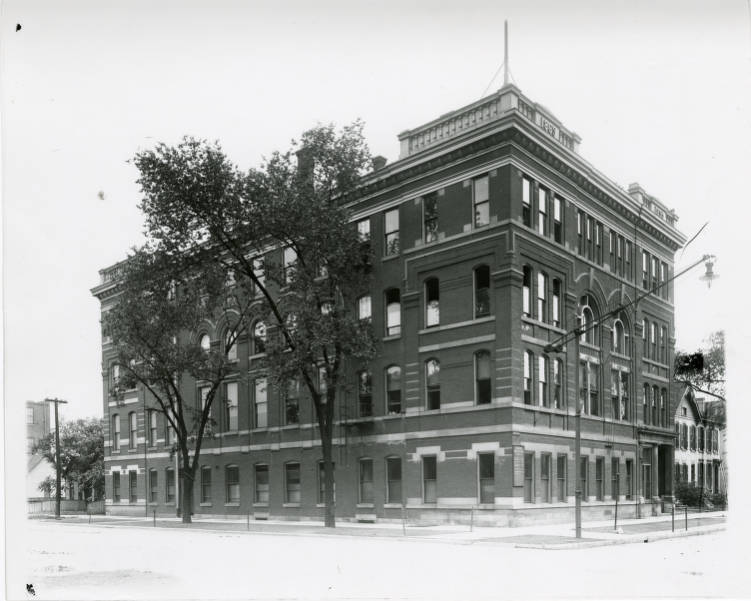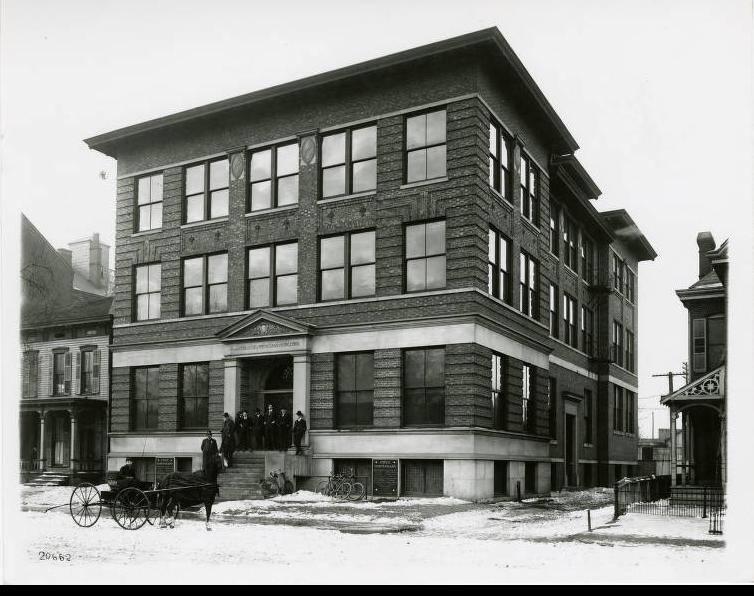Medicine was taught by the preceptor (apprenticeship) system in Indiana throughout most of the 19th century. The state’s first successful medical school commenced in 1841 at La Porte, and existed until 1856. Its graduates included William Henry Wishard, father of , for whom is named; William Mayo, who would later found the Mayo Clinic in Minnesota; and William Lomax, whose bequest would provide for construction in 1895 of a modern medical school building. The Lomax Building, located on Senate Avenue at the northwest corner of Market Street, was variously the home of Indiana University School of Medicine (1908-1918), the State Board of Health, and the State Highway Commission. It was razed in 1961.

The first proprietary school in Indianapolis was Indiana Central Medical College (1849-1852), associated with Asbury College (now DePauw University) and located in a brick structure on East Washington Street. , a pioneer city physician, served as dean, and an 1851 graduate was Joshua T. Belles, maternal grandfather of Britain’s prime minister from 1956 to 1963, Harold Macmillan.
There were no medical schools in Indiana between 1852 and 1869. Bobbs and others launched a more successful school in 1869, the Indiana Medical College. Its initial session was held in the old , and following sessions were held in a building that existed until 1969 at the northwest comer of Delaware and Court streets. An early graduate of this Delaware Street school (1871) was Harvey W. Wiley, author of the U.S. Pure Food and Drug Act.

In 1874, dissident faculty members from Indiana Medical College established the College of Physicians and Surgeons. The two schools reunited in 1878 under the name Medical College of Indiana. Its location, until the construction of the Lomax Building, was the northeast corner of Pennsylvania and Maryland streets.
In 1879, another dissident group formed the Central College of Physicians and Surgeons (1879-1905). In 1905 this group reunited with the Medical College of Indiana and joined with the Fort Wayne College of Medicine (1879-1905), the name of the united schools being the Indiana Medical College. The purpose of the union was to create a state-supported medical school, which was initiated with Purdue University (1905-1907).
Indiana University began developing a medical school in 1903, achieving an excellent program for the first two years—the basic science years. By incorporating the teaching staff of the Indiana Medical College into its program, Indiana University created a four-year program, one of the few in the nation to receive praise in the 1910 Flexner report on medical education. (See )
Other medical schools in Indianapolis included the Physiomedical College (1873-1909), the Indiana College of Medicine and Midwifery (1877-1888), Indiana Eclectic Medical College (1880-1890), Beach Medical College (1883-1886), Eclectic College of Physicians and Surgeons (1890-1894), American Medical College (1894-1897), the University of Medicine (1897-1898), the Eclectic Medical College of Indiana (1900-1908), and the State College of Physicians and Surgeons (1906-1908), the latter being identified with Indiana University. Other Indiana medical schools were located in New Albany, Vincennes, Evansville, Marion, and Valparaiso. This plethora of schools was typical for the age. They varied from very good to very bad. The New Albany school, for example, was a fraudulent diploma mill. At the other extreme was the Physiomedical College, which was held in high esteem.
Despite competition to establish a second medical during the 1960s in the midst of fears of a doctor shortage, IUSM remained the only one in Indiana throughout the rest of the twentieth century. In 2010 this situation changed when Marian University founded its College of Osteopathic Medicine with a $48 million donation from Michael Evans, CEO of AIT Laboratories of Indianapolis. The initial class included 162 students and began taking classes in August 2013. Accredited by the American Osteopathic Commission on Osteopathic Accreditation, graduates from the Marian University school receive the Doctor of Osteopathic Medicine, D.O., the first such offering in the state.

Help improve this entry
Contribute information, offer corrections, suggest images.
You can also recommend new entries related to this topic.

